Traditional Food Town around Namhansanseong Fortress (남한산성 전통음식마을)
15.8Km 2021-03-17
731, Namhansanseong-ro, Gwangju-si, Gyeonggi-do
+82-31-762-3010
The Traditional Food Town around Namhansanseong Fortress has many restaurants offering rice, dotorimuk (acorn jelly salad), tojongdak (whole chicken) dishes, and other traditional dishes. The area embraces almost 300 years of Korean history and the restaurants were built in traditional hanok-style buildings around Namhansanseong Fortress, a military stronghold from the Joseon dynasty.
Nature Republic - Suwon Nammun Branch [Tax Refund Shop] (네이처리퍼블릭 수원남문점)
15.8Km 2024-04-19
2, Paldalmun-ro, Paldal-gu, Suwon-si, Gyeonggi-do
-
Mong Ted (몽테드)
15.8Km 2024-11-13
14 Hwaseomun-ro 48beon-gil, Paldal-gu, Suwon-si, Gyeonggi-do
◎ Travel information to meet Hallyu’s charm – TV series “Lovely Runner”
Café Mong Ted appears as Sol’s house in the drama, with the blue-gate house across the alley as Sun-jae’s residence. Take a stroll down the alley, perhaps with a yellow umbrella, to feel like the characters in “Lovely Runner.”
Paldalmun Market (팔달문시장)
15.8Km 2024-10-31
17 Jeongjo-ro 770beon-gil, Paldal-gu, Suwon-si, Gyeonggi-do
There are 9 traditional markets around Suwon's South Gate. Among them, in Paldalmun Market, there is a whole chicken street that stretches for about 400m, so many people visit it. The old-fashioned way of frying the whole chicken in a large cauldron and the unique seasoning preserve its flavor. After visiting other connected markets, you can complete your Suwon tour by walking through the Hwaseong Fortress, a UNESCO World Heritage Site.
Suwon Hwaseong Fortress [UNESCO World Heritage] (수원 화성 [유네스코 세계유산])
15.8Km 2024-10-24
Yeonghwa-dong, Jangan-gu, Suwon-si, Gyeonggi-do
+82-31-290-3600
Suwon was one of four main regional government centers during the Joseon dynasty. Hwaseong Fortress, built to protect the city, was designated as a UNESCO World Cultural Heritage Site on December 12, 1997 for its historical value. The fortress offers various performances daily as well as the Suwon Hwaseong Cultural Festival every fall. The walls stretch for 5,700 kilometers, with Paldalsan Mountain at the center. The fortress, constructed from 1794 to 1796, was built as a display of King Jeongjo’s filial piety towards his father and to build a new pioneer city with its own economic power.
Suwon Hwaseong Special Tourist Zone (수원화성 관광특구)
15.9Km 2024-10-24
780 Jeongjo-ro, Paldal-gu, Suwon-si, Gyeonggi-do
Hwaseong Fortress, Suwon, was built by King Jeongjo, the 22nd ruler of the Joseon dynasty, when he moved the tomb of his father, Crown Prince Sado, to Hwasan Mountain in Suwon. Because of its high historical and cultural value, it was designated as a UNESCO World Heritage Site in 1997. In 2016, the Hwaseong Fortress area, ranging from Paldalsan Mountain to Jangan Park, Yeonmudae Command Post, and Paldalmun Market, was designated as a special tourist zone, establishing itself as a representative tourist destination in Suwon visited by many tourists.
LOTTE Premium Outlet - TIME VILLAS Store (롯데프리미엄아울렛 타임빌라스)
15.9Km 2023-09-11
1, Barasan-ro, Uiwang-si, Gyeonggi-do
+82-1577-0001
Discover fresh and delightful experiences each day at LOTTE Premium Outlet Time Villas. The name "Time Villas" merges "Time" and "Villas," evoking a space where time finds a desire to linger. Time Villas offers a sanctuary to relax and relish various experiences amid the ever-changing beauty of nature, with the backdrop of Barasan Mountain and Baegun Lake. Reflecting the motto "Every Single Moment," cherish your own distinct instant at Time Villas, nestled in the dynamic allure of ever-changing nature.
Suwon Hwaseong Cultural Festival (수원화성문화제)
15.9Km 2025-07-09
825 Jeongjo-ro, Paldal-gu, Suwon-si, Gyeonggi-do
+82-31-228-3920
Hwaseong Fortress, a UNESCO World Heritage Site, hosts the Suwon Hwaseong Cultural Festival every autumn. The festival’s main event is the “King Jeongjo’s Royal Parade,” a reenactment of King Jeongjo’s procession to pay respects to his father Crown Prince Sado’s tomb. This spectacular event features over 4,000 participants in traditional Joseon-era costumes marching along a 59km route. The “King Jeongjo’s Dasobangwa” program, offering a taste of royal court cuisine served for the Banquet of Lady Hyegyeong-Gung Hong, is especially popular among international tourists. Additionally, the festival includes fortress-building experiences, night tours, and various reenactment events and performances, all linked to Hwaseong Fortress, Suwon.
◎Hwaseong Fortress, Suwon
This planned city was built by King Jeongjo during the Joseon Dynasty. It is considered a pinnacle of Korean fortress culture, incorporating the advanced technologies of its time.
Paldalmun Gate (팔달문)
15.9Km 2021-01-29
780, Jeongjo-ro, Paldal-gu, Suwon-si, Gyeonggi-do
+82-31-228-2765
Paldalmun Gate is the southern gate of Hwaseong Fortress, and its name means "a gate opening to a road that leads to all directions." Among the four gates of Hwaseong Fortress, the northern and southern gates are bigger and more grandiose. The gate has an entrance wide enough to let the king's palanquin pass through and a watchtower over the entrance. Outside of the gate is a crescent-shaped protection wall called ongseong.
Among the ongseong walls found across the country, Paldalmun Gate's ongseong wall stands out in terms of size and form. The hip roof and decorations seen on Paldalmun Gate's watchtower resemble that of fortress watchtowers, and are recognized as representation of late Joseon dynasty's watchtower architecture.
Haengnidan Street (행리단길)
15.9Km 2025-06-18
43 Hwaseomun-ro, Paldal-gu, Suwon-si, Gyeonggi-do
Haengnidan Street is a stretch of approximately 612 meters from Hwahongmun Gate of Hwaseong Fortress to Hwaseo Park. The name Haengnidan Street originates from Haenggung-dong (Haenggung referring to the king's temporary palace) and Gyeongnidan Street, a popular area in Itaewon, Seoul. This vibrant district seamlessly blends tradition and modernity, featuring a variety of unique restaurants, stylish cafés, concept stores, and exhibition spaces. It has become one of Suwon's most iconic attractions.
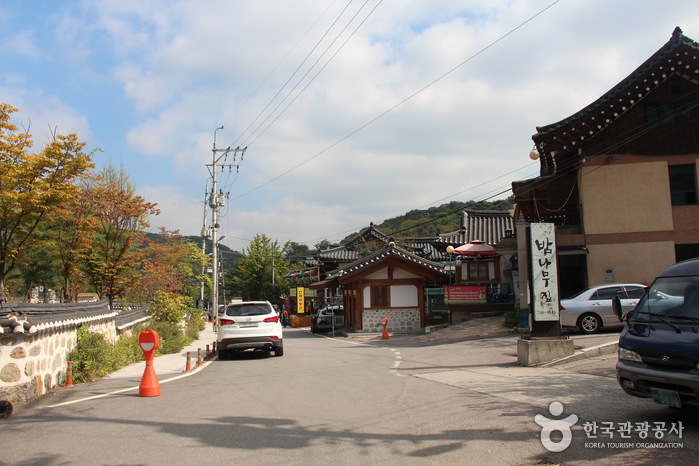
![Nature Republic - Suwon Nammun Branch [Tax Refund Shop] (네이처리퍼블릭 수원남문점)](http://tong.visitkorea.or.kr/cms/resource/57/2887757_image2_1.jpg)
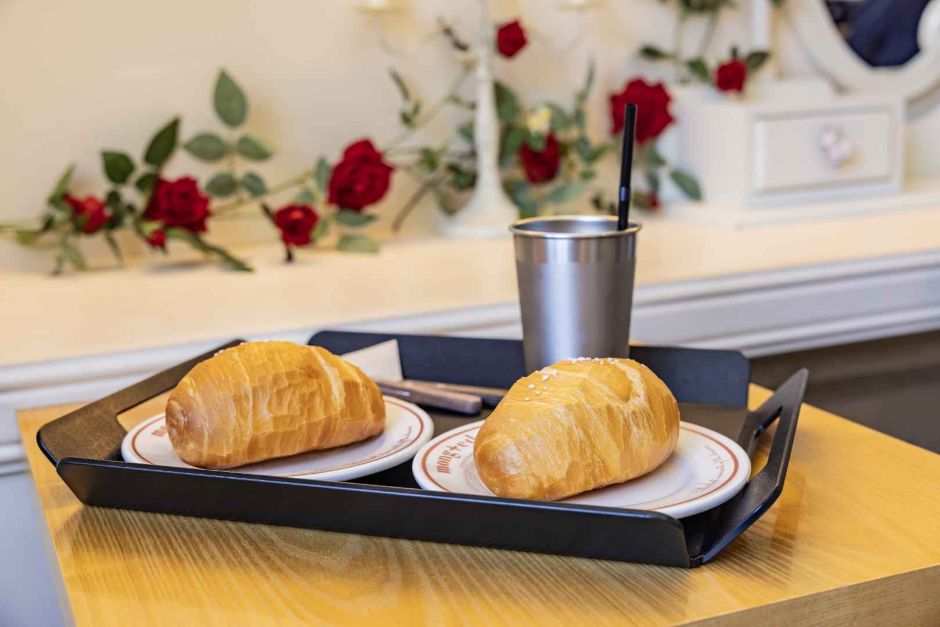
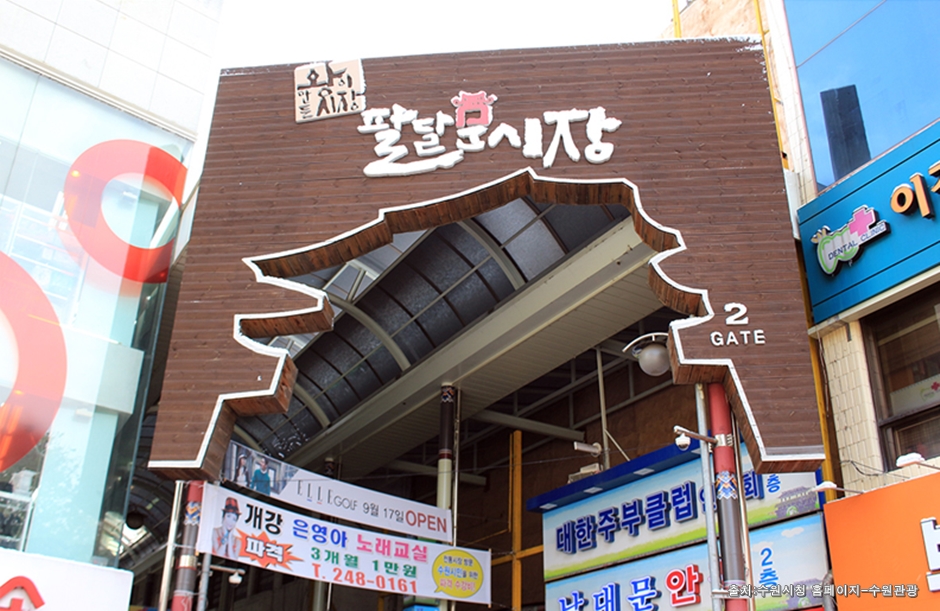
![Suwon Hwaseong Fortress [UNESCO World Heritage] (수원 화성 [유네스코 세계유산])](http://tong.visitkorea.or.kr/cms/resource/36/2613036_image2_1.jpg)
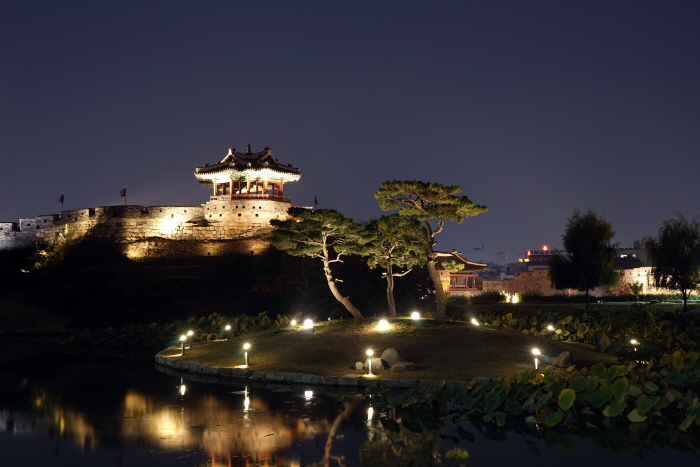

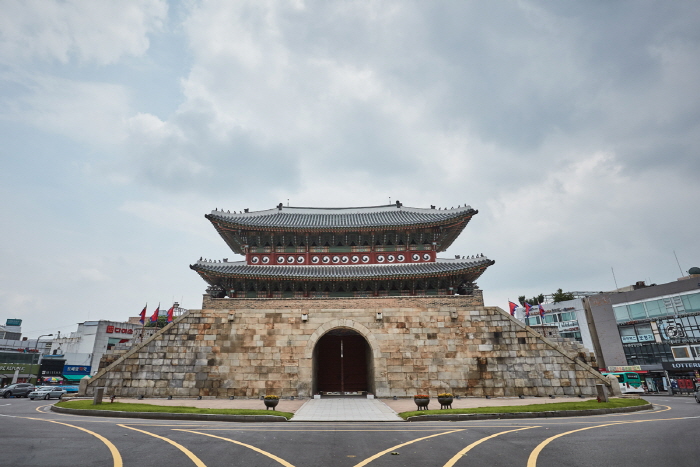
 English
English
 한국어
한국어 日本語
日本語 中文(简体)
中文(简体) Deutsch
Deutsch Français
Français Español
Español Русский
Русский